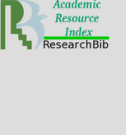Charting New Paths: Standard Growth Charts for Pakistani Children (6-24 Months) using Multiple Indicator Cluster Survey Data
Keywords:
Child development, Cluster Survey, Growth charts, Multiple Indicator, Pakistani childrenAbstract
Background: Reliable growth charts are vital for child health monitoring, with chart development based on empirical data and statistical traits. The World Health Organization (WHO) growth standards are used to monitor children's growth worldwide. Recent studies emphasize the need for customized country-specific standards. In Pakistan, reference charts exist, but a standard chart for under-two children is absent due to financial constraints.
Objective: This study employs the Novel Case Selection Method (NCSM) to derive variables from Multiple Indicator Cluster Survey (MICS) data for crafting growth charts for children aged 6 to 24 months.
Methods: Employing NCSM along with an algorithm for age-appropriate complementary feeding, this study selects 6,085 cases from 28,256 (aged 6-24 months) MICS data, forming the basis for standard growth chart creation. Using GAMLSS models with RefCurve_0.4.2, three families (Box Cox Cole and Green, Box Cox Power Exponential, Box Cox T) and three smoothing techniques (cubic splines, penalized splines, polynomial splines) are compared based on criteria including global deviance, Akaike Information, and Bayesian Information. Two models each for Height-for-Age (H/A) and Weight-for-Age (W/A), categorized by gender, yield standard growth curves compared with WHO 2006 standards.
Results: The study's NCSM, combined with considerations for complementary feeding and other WHO criteria, selects 6085 cases from MICS data with 28256 available. Optimal choices for male and female W/A, and female H/A curves are BCPE. Conversely, male H/A curves align with different parameters (BCT). The indigenous standard curves developed for Pakistan show distinct trajectories compared to WHO standards.
Conclusion: The necessity of establishing indigenous pediatric growth standards is evident in the observed disparities with WHO standards. These disparities highlight the need for context-specific benchmarks to accurately assess nutritional status and growth in Pakistani children.
Downloads
References
. WHO. WHO Child growth standards 2023 [Available from: https://apps.who.int/iris/bitstream/handle/10665/43413/924154693X_eng.pdf
. Khadilkar V, Khadilkar AV, Kajale N. Indian growth references from 0-18-year-old children and adolescents-a comparison of two methods. Indian J Endo Metab. 2019;23(6):635.
. Natale V, Rajagopalan A. Worldwide variation in human growth and the World Health Organization growth standards: a systematic review. BMJ Open. 2014;4(1):e003735.
. Carroll AE. The trouble with growth charts. The New York Times, Parenting. 2020.
. Chamidah N, Tjahjono E, Fadilah A, Lestari B, editors. Standard growth charts for weight of children in East Java using local linear estimator. J Physics: Conference Series; 2018: IOP Publishing.
. Mushtaq MU, Gull S, Abdullah HM, Shahid U, Shad MA, Akram J. Prevalence and socioeconomic correlates of overweight and obesity among Pakistani primary school children. BMC Public Health. 2011;11(1):1-10.
. Aziz S, Ain W, Majeed R, Khan MA, Qayum I, Ahmed I, et al. Growth centile charts (anthropometric measurement) of Pakistani pediatric population. J Pak Med Assoc. 2012;62(4):367.
. Iftikhar S, Khan N, Siddiqui JS, Baig-Ansari N. Development of growth charts of Pakistani children aged 4-15 years using quantile regression: a cross-sectional study. Cureus. 2018;10(2).
. Asif M, Aslam M, Mazhar I, Ali H, Ismail T, Matłosz P, et al. Establishing height-for-age z-score growth reference curves and stunting prevalence in children and adolescents in Pakistan. Int J Env Res Pub Heal. 2022;19(19):12630.
. Akbar N, Aslam M, Petersen JH, Mustafa G. The 2022 Pakistani references from birth to 60 months for length/height, weight and body mass index. Acta Paediatr. 2023;112(6):1249-58.
. Abtahi M, Doustmohammadian A, Abbdollahi M. Construction of national standards of weight and height and growth charts of Iranian children: a review article. Int J Prev Med. 2011;2(3):122-6.
. Pérez-Bermejo M, Alcalá-Dávalos L, Pérez-Murillo J, Legidos-García ME, Murillo-Llorente MT. Are the growth standards of the world health organization valid for spanish children? The SONEV Study. Front Pediatr. 2021;9:700748.
. Khan S, Hancioglu A. Multiple indicator cluster surveys: delivering robust data on children and women across the globe. Stud Fam Plann. 2019;50(3):279-86.
. Aasim M, Chand S. Novel Methodology for the selection of cases from mics data for growth charts development based on WHO criterion. Pak J Med Health Sci. 2022;16(11):138.
. Aasim M, Chand S. Height-for-age and weight-for-age growth charts for Pakistani infants under six months: derived from a novel case selection method using multiple indicator cluster survey data. BMC Med Res Methodol. 2023;23(1):289.
. Rigby RA, Stasinopoulos DM. Generalized additive models for location, scale and shape. J R Stat Soc Ser C Appl Stat. 2005;54(3):507-54.
. Cole TJ, Green PJ. Smoothing reference centile curves: the LMS method and penalized likelihood. Statistics in medicine. 1992;11(10):1305-19.
. Group WMGRS, de Onis M. WHO Child Growth Standards based on length/height, weight and age. Acta paediatrica. 2006;95:76-85.
. Rigby RA, Stasinopoulos DM. Smooth centile curves for skew and kurtotic data modelled using the Box–Cox power exponential distribution. Statistics in medicine. 2004;23(19):3053-76.
. Rigby RA, Stasinopoulos DM. Using the Box-Cox t distribution in GAMLSS to model skewness and kurtosis. Statistical Modelling. 2006;6(3):209-29.
. Green P. BW Silverman in: Nonparametric regression and generalized linear models [M]. London: Chapman & Hall; 1994.
. Dewey K. Guiding principles for complementary feeding of the breastfed child. 2003.
. Shrestha R. Complementary Feeding: Principles, Characteristics & Benefits April 4, 2023. Available from: https://www.publichealthnotes.com/complementary-feeding-principles-characteristics-benefits/.
. UNICEF. MICS round 6 data for Pakistan 2022 [Available from: https://mics.unicef.org/surveys.
. Richard SA, Black RE, Gilman RH, Guerrant RL, Kang G, Lanata CF, et al. Diarrhea in early childhood: short-term association with weight and long-term association with length. Am J Epidemiol. 2013;178(7):1129-38.
. WHO. Cough or difficulty in breathing. Pocket Book of Hospital Care for Children: Guidelines for the Management of Common Childhood Illnesses. 2nd ed. Geneva: World Health Organization; 2013.
. UNICEF. Pakistan National Nutrition Survey 2018: Key Findings Report. . 2018.
Downloads
Published
Issue
Section
Categories
License
Copyright (c) 2025 Open Access Journal

This work is licensed under a Creative Commons Attribution-NonCommercial 4.0 International License.



